MARIANI’S
Virtual
Gourmet
May 17, 2020
NEWSLETTER
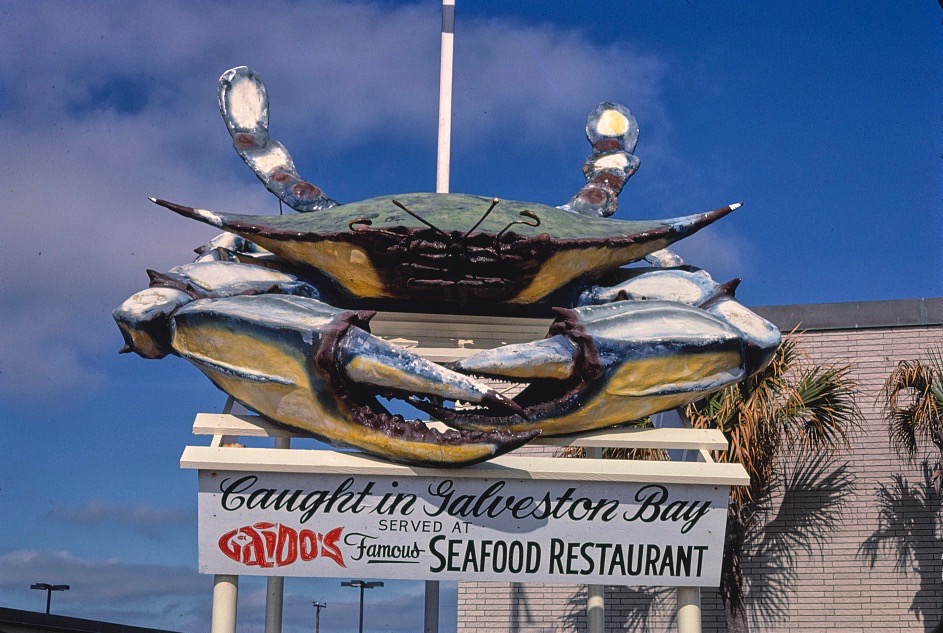
GAIDO'S, GALVESTON BAY,
TEXAS
IN THIS ISSUE
WHAT WILL THE NEW NORMAL BE
FOR BUSINESS ENTERTAINING?
By John Mariani
NEW YORK CORNER
LOVE AND PIZZA,
Chapter Eight
By John Mariani
NOTES FROM THE WINE CELLAR
TEN MYTHS OF WINE
By John Mariani

View John Mariani on Wine Buying Strategies
❖❖❖
WHAT WILL THE NEW NORMAL BE
FOR BUSINESS ENTERTAINING?
Part One
By John Mariani
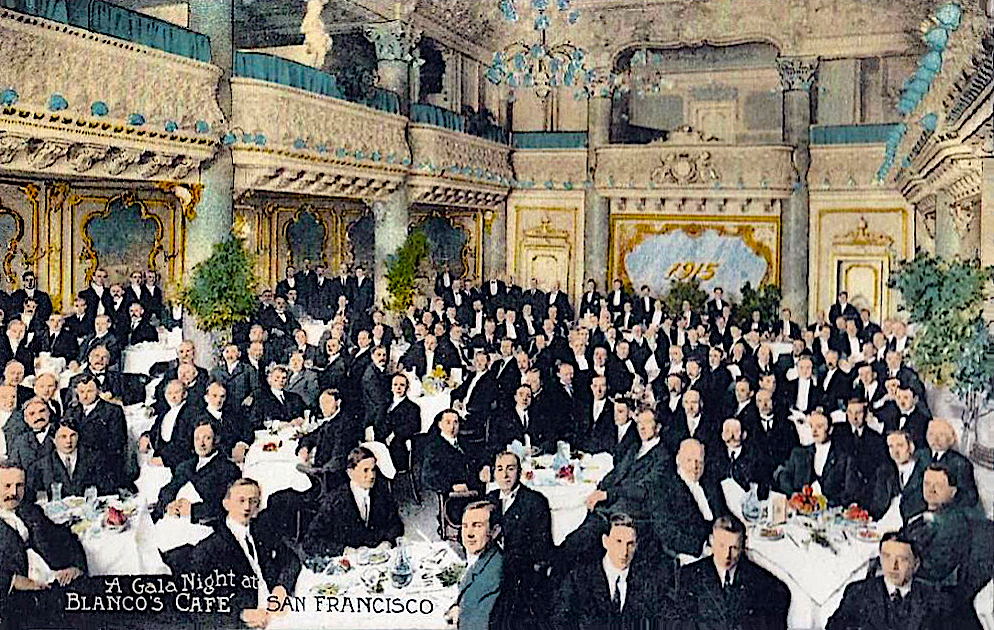
The notorious “three martini
lunch” may have gone out of style with “Mad
Men,” but business entertaining has always waxed
and waned in response to natural and man-made
crises. After 9/11 and the 2008 crash, companies
slashed expense accounts, limited all but
essential business meals and made lists of
four-star restaurants and hotels no longer
approved for executive travel. But business
entertaining always rebounds, prices at
restaurants always go up, the deluxe end of the
hotel market always increases and business class
airline travel soars.
But … not … now. The current
pandemic has obliterated all such business
entertaining, including corporate gatherings in
convention towns like Las Vegas and few executives
are flying anywhere, first or coach class. When
this crisis passes, what will be the new normal
for business entertaining and travel? If
teleconferencing by at-home employees becomes
cheaper and more convenient, will there be good
reasons to fly execs to London for a meeting? Will
clinching a deal over a porterhouse and $500
bottle of Bordeaux at Smith & Wollensky seem
like nothing more than an extravagance? Is there
any justification for booking a corporate suite at
the Ritz-Carlton in Boston?
I asked a number of company
CEOs and managers what they see in terms of
business entertaining as the pandemic subsides.
Curiously, the only industry whose executives were
prevented from commenting was the financial and
banking sector.
I asked two basic questions:
Before the pandemic did you and your company do a
good deal of business entertaining and events,
and, when the pandemic ends, what do you think the
new landscape for business entertaining will be
like?
Michael
R. Payne is Chairman
and CEO of Payne Sports Media Strategies and, as
the
former head of International Olympic Committee
marketing, led the Olympics’ first global
marketing strategy. He was nominated as one of the world’s most
influential marketers by Advertising Age.
Most recently, with
his Chinese partner Shankai, he
pioneered the Alibaba–IOC long-term
partnership deal.
We
do a
lot of entertaining. I run a global strategic
advisory business, with clients around the world,
from Olympics, to World Cup [soccer] to F1
[Formula 1 motor racing], requiring a lot of
travel—both to them and [they] to me. There’s a
lot of conventions and corporate travel, and I
travel intercontinental normally a minimum of once
a month.
As for the
future, I have been impressed how much can be done
with video conferencing like Zoom—especially
multi-country groups. A few weeks ago we had a
press conference with 150 journalists on live
video from 80 countries. But in the end, no amount
of technology innovation is ever going to replace
the importance of relationships in the business
world—and to build relationships you need to meet
in person, engage in a relaxed environment,
outside of the constraints of the office. Strong
relationships will not come about solely through a
long-distance digital call.
 Shamin Abas is
President of Shamin Abas ULTRA-LUXURY BRAND
MARKETING & BUSINESS DEVELOPMENT. She is on the NYU Stern School of
Business’s Advisory Board and Member of its
Fashion and Luxury Council. In September 2016,
Abbas partnered with Bob Rubin of The Bridge
Golf Club to launch an annual, invite-only
classic car exhibition for members and VIP
guests, and has successfully attracted
sponsorship partners that include Bugatti,
Airbus, NetJets, Burgess Yachts, Rolls-Royce
Motor Cars, Triton Submarines and Nicholas
Brawer.
Shamin Abas is
President of Shamin Abas ULTRA-LUXURY BRAND
MARKETING & BUSINESS DEVELOPMENT. She is on the NYU Stern School of
Business’s Advisory Board and Member of its
Fashion and Luxury Council. In September 2016,
Abbas partnered with Bob Rubin of The Bridge
Golf Club to launch an annual, invite-only
classic car exhibition for members and VIP
guests, and has successfully attracted
sponsorship partners that include Bugatti,
Airbus, NetJets, Burgess Yachts, Rolls-Royce
Motor Cars, Triton Submarines and Nicholas
Brawer.
We work solely with brands in the
ultra-luxury arena that cater to high-net-worth
and ultra-high-net-worth individuals and so our
connection to the country’s best restaurants and
the top chefs that sit at their helm is critical
for us, whether it’s wowing our own clients with a
personalized experience while hosting them at a
hard-to-get-into restaurant or presenting a noted
chef as a key part of an experience offsite or in
their private dining room for one of our brands
while they engage with their top clients, we do a
considerable amount of entertaining with
restaurants.
Our clients have a substantial
presence at annual events such as the U.S. boat
shows in Fort Lauderdale, Miami and Palm Beach, at
Monterey Car Week, Art Basel, Amelia Island
Concours d’Elegance and The Bridge, and these
gatherings of collectors and enthusiasts generate
significant business for the restaurants in these
locations. With Pebble Beach, Quail, a Motorsports
Gathering and The Bridge cancelling for 2020,
there is a question mark over whether large events
this fall and winter will take place. And even if
they do, will people attend in anywhere close to
the numbers they did? The financial impact for
these restaurants will be devastating. We are seeing
the budgets of our clients realigning, with funds
that were allocated for larger events pre-Covid-19
being reshuffled into “experiences” with small
groups of individuals being invited to participate
in environments that allow for social distancing.
In our arena, chefs and restaurants will still
have an important role to play in the overall goal
of delighting and surprising this often difficult
to impress consumer. Just last week we presented
to a private bank client the concept of a Daniel
Boulud-prepared picnic basket, filled with the
most incredible local, earth-to-table lunch to
enjoy on a personalized cashmere blanket at the
stop-off of a very special classic car
rally—handed to the guests by the man himself,
with gloves on, of course!
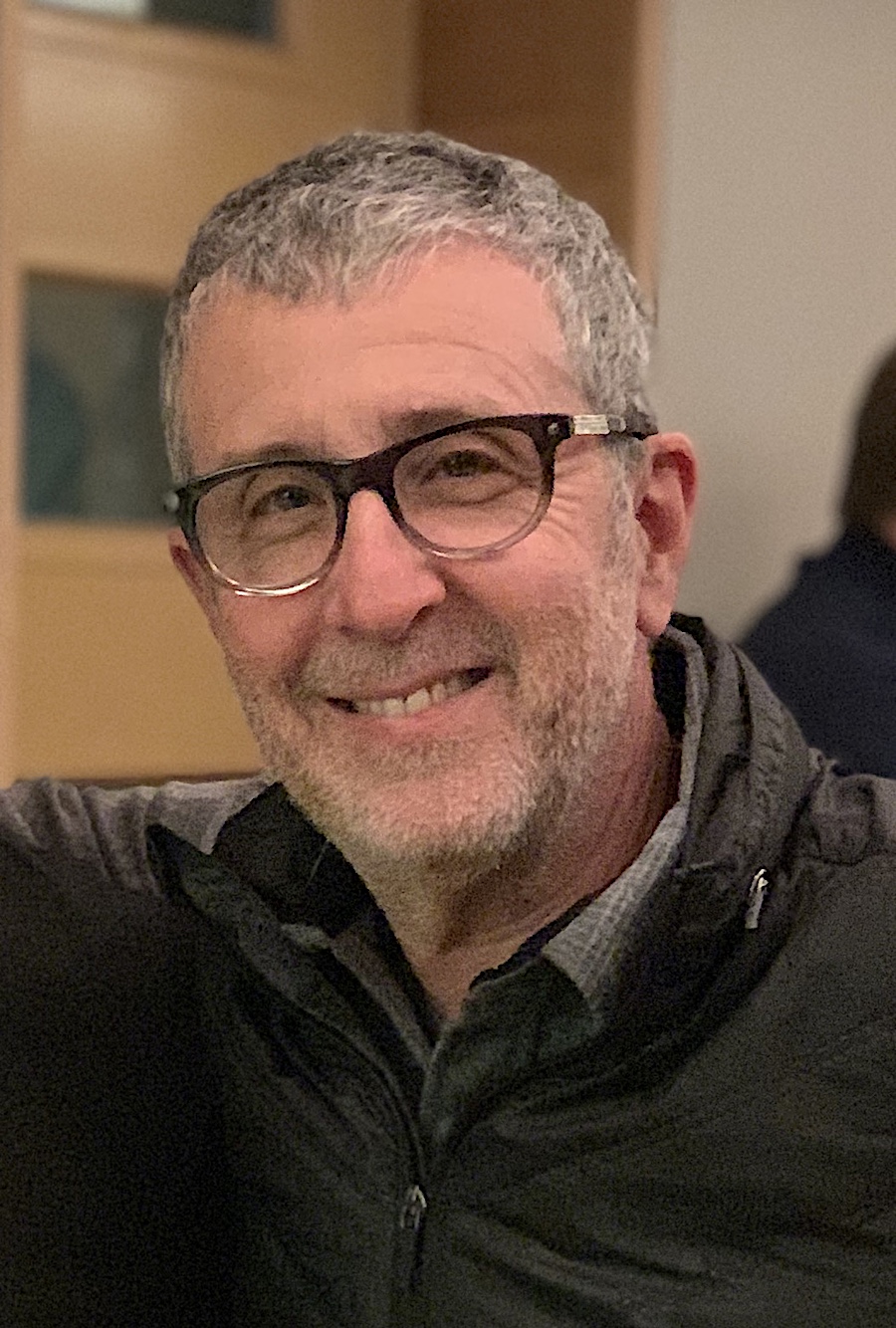 Rick Cooper
is CEO/COO of Rick
Cooper Music in Chicago, an independent
pop-music consultant to the record and radio
industries. He is also a partner in several
restaurants in Chicago and co-owner of Alex
Cooper Project Wines. He has promoted
artists ranging from U2, Post Malone, Billie
Eilish and Harry Styles to up-and-comers like
Doja Cat, JP Saxe and Saint Jhn.
Rick Cooper
is CEO/COO of Rick
Cooper Music in Chicago, an independent
pop-music consultant to the record and radio
industries. He is also a partner in several
restaurants in Chicago and co-owner of Alex
Cooper Project Wines. He has promoted
artists ranging from U2, Post Malone, Billie
Eilish and Harry Styles to up-and-comers like
Doja Cat, JP Saxe and Saint Jhn.
Being in the business of promoting new
music releases from both up-and-coming and
established artists to radio stations, you can
imagine that entertaining clients in restaurants
is a huge part of my day-to-day. Before the
pandemic I traveled (and plan to again) to New
York and Los Angeles regularly to meet with
executives at the record labels who hire me, as
well as artist managers, publishers, producers and
often the artists themselves. My travels
also take me to visit radio stations, literally
from coast to coast. I discuss my business,
but over a great meal and wine. Dining out
at the hippest spots in town is the norm in the
music industry. And I always find the best.
All of my clients, both at
radio and in the music industry are aware of my
side hustles as a partner in both a group of
restaurants here in Chicago (avec, Publican, Café
Cancale) and a wine brand called Alex Cooper
Project. So, believe me when I tell
you that they all know that “I ain’t eating at no
Olive Gardens” when I’m on the road.
When planning my business
trips, dining out is always foremost in
mind. Of course, I’d choose a great place to
dine, perhaps before or after a concert, but often
I’d travel to see clients and schedule my trip
around a special wine dinner. Why only take a
client out for dinner when I can take them out for
something more unique?
There are the Grammys every
year, so I’d always meet with and entertain
clients during the days leading up to the
event. We also have annual conferences in
L.A. and Minneapolis (a great food city!) and a
few other broadcasting conferences that change
locations from year-to-year. The music
industry is a major supporter to the City of Hope.
Unfortunately our annual “Taste of Hope”
wine dinner in New York in March was canceled as a
result of the pandemic. This is a real shame
because it’s the single biggest event if its kind
each year and generates so much money for a great
cause, not to mention it being a tremendous
opportunity for guys who like to show-off and
share our really special wine collections.
What the future holds is
difficult to say. Being involved in my own
restaurants and seeing our struggles and dilemmas,
I’m afraid that so many restaurants across the
country will be unable to reopen. Further,
many that do may not be able to sustain and close
within months. It’s just so hard to know for
sure though.
I do believe that restaurants
will always be an essential part of doing
business. Just like golf or taking a client
to a ball game.
Of course, there will be requisite budget
cuts in any business. But I like to believe
that we are an incredibly strong country and that
music plays such a big part in everyone’s
lives. Once this passes, and it will at some
point, concert tours will hit the road, the major
festivals will resume and people will flock to
their favorite restaurants. But only the
smartest of operators will still be around to
serve them.
 Peter
Miller, known as the “Literary Lion,” is
President/CEO of Global Lion Intellectual
Property Management, and has represented more
than 1,500 books, including 23 NY Times
bestsellers. His company has managed, developed
or executive-produced 23 film and television
projects, several nominated for Emmy Awards. He
regularly attends colleges, universities,
writing conferences, Book Expo America, the
London International Book Fair and the Frankfurt
Book Fair.
Peter
Miller, known as the “Literary Lion,” is
President/CEO of Global Lion Intellectual
Property Management, and has represented more
than 1,500 books, including 23 NY Times
bestsellers. His company has managed, developed
or executive-produced 23 film and television
projects, several nominated for Emmy Awards. He
regularly attends colleges, universities,
writing conferences, Book Expo America, the
London International Book Fair and the Frankfurt
Book Fair.
I’ve
traveled
over five million miles in my lifetime thus far
and have been entertaining clients all around the
world. I'll
never forget the first time I was I am a strong
advocate of the beautiful restaurant experience
that someone who's a social animal like me can
have and share with literally thousands of
people in the last 50 or so year.
Sadly all this has changed and
will continue to change as we create the "New
Normal," especially with someone like me with a
challenged immune system. Consequently, I'm super
careful about food and will be very, very
selective about not only buying food but also
going to restaurants. I'll wear a mask and gloves
to any restaurant I attend for probably the rest
of my life.
Expense accounts will be looked
at more carefully. The old model of the literary
lunch may wind up in a Zoom or WhatsApp call. I don't
know if I'm ever going to attend a book convention
in Frankfurt, London, New York, Bologna, or China
ever again. With the advent of technology and the
success of Zoom, it's not necessary for me to
travel so far, spend so much money, and risk the
possibility of getting a disease because I was at
a convention with 30,000 people from all over the
world.
I've always had six or seven
trips planned annually for the last 30 years. For
the first time, I have none. The world is
changing, but I'm trying to keep a positive
outlook for me to redesign my future so I can
continue with my work and represent powerful,
life-changing, entertaining books, publishers, and
film and television projects.
❖❖❖
By John Mariani
LOVE AND PIZZA
Since, for the time being, I am unable to write about or review New York City restaurants, I have decided instead to print a serialized version of my (unpublished) novel Love and Pizza, which takes place in New York and Italy and involves a young, beautiful Bronx woman named Nicola Santini from an Italian family impassioned about food. As the story goes on, Nicola, who is a student at Columbia University, struggles to maintain her roots while seeing a future that could lead her far from them—a future that involves a career and a love affair that would change her life forever. So, while New York’s restaurants remain closed, I will run a chapter of the Love and Pizza each week until the crisis is over. Afterwards I shall be offering the entire book digitally. I hope you like the idea and even more that you will love Nicola, her family and her friends. I’d love to know what you think. Contact me at loveandpizza123@gmail.com
—John Mariani
To read previous chapters go to archive (beginning with March 29, 2020, issue.
LOVE AND PIZZA
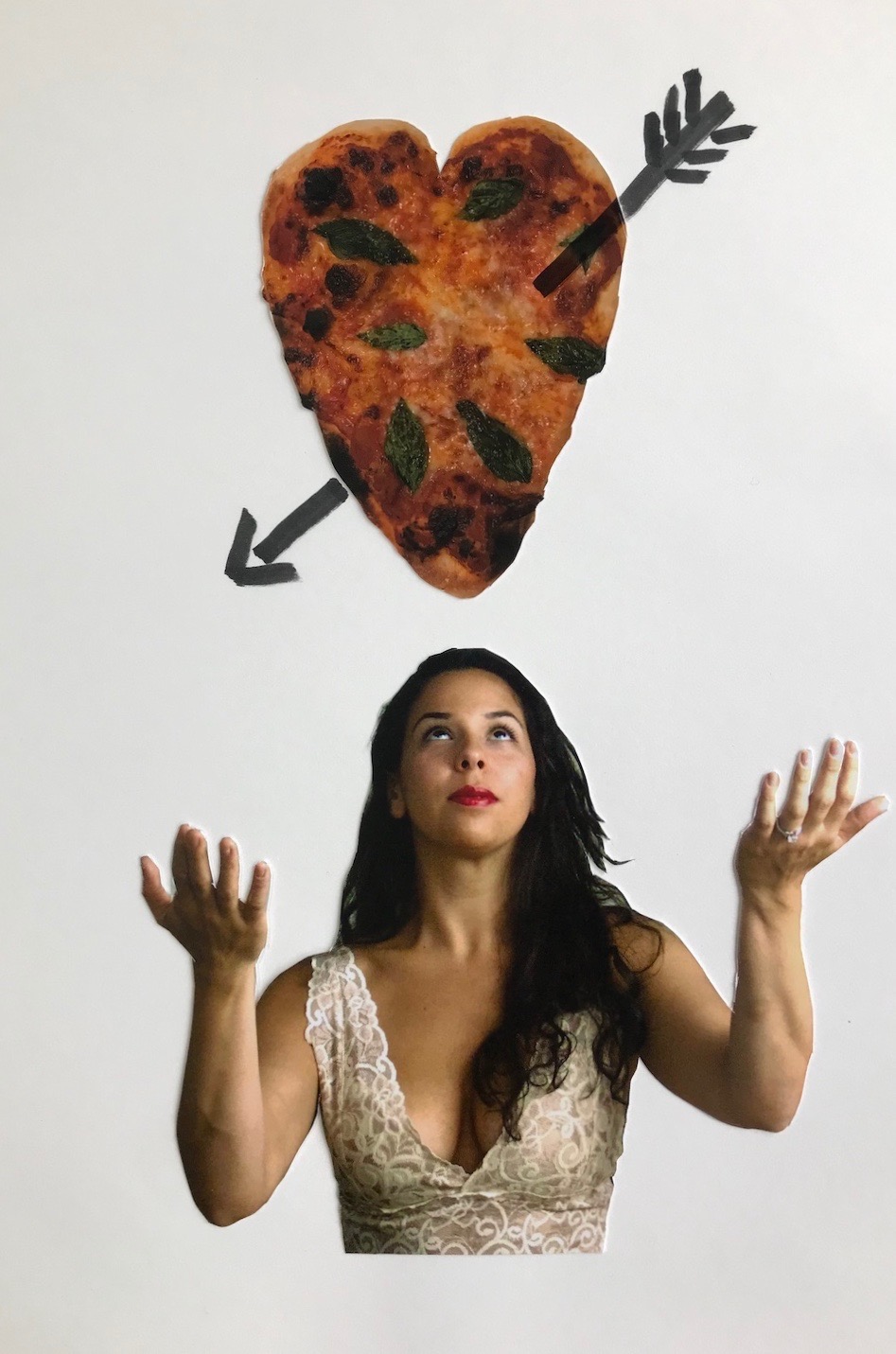
Cover Art By Galina Dargery
After winter
break, the students going abroad were to meet
together for orientation at Columbia to learn
travel plans, what to expect on arrival, what to
bring and what not to, who their dorm partners
would be, and a score of other details. Along
with a credit card in her name, but her father’s
account, and some Cook’s traveler’s checks,
Nicola had just obtained her pliable dark blue
American passport, its empty leaves indicative
that she’d never been anywhere outside the U.S.
As is always the case with passports, the photo
was the worst picture she had ever taken, and it
would stay on that page for the next ten years. But
she loved thumbing through the little book,
smelling the pages imprinted with totems from
American history—like the Liberty Bell, Mount
Rushmore and the Statue of Liberty—dreaming that
someday those pages would have dozens of stamps
from all over the world.
She learned that her dorm
mate would be a girl she knew vaguely from
various classes, a pre-law student named
Catherine Newcombe, whose father, grandfather
and great grandfather had all been lawyers and
whose parents lived in a duplex on Park Avenue. Almost
as tall as Nicola and very pretty, with honey
blonde hair and green eyes, Catherine—never
Cathy—came over to Nicola and said, “So they’ve
thrown us together.”
“Guess so,” said Nicola.
“What’s your major?”
“Art history.”
 “Well,
that makes sense to go to Italy. I’m
in pre-law but frankly I just want to get away
from here and from my family for a semester and
breathe some fresh air until summer.”
“Well,
that makes sense to go to Italy. I’m
in pre-law but frankly I just want to get away
from here and from my family for a semester and
breathe some fresh air until summer.”
“What will you do then?”
“We summer on Nantucket. We
have a house there. Ever been?”
“No,” smiled Nicola, “I’ve
never been to a lot of places.”
“Where you from?”
Catherine thought
Nicola replied “Bronxville,” one of Westchester
County’s wealthiest suburbs—dubbed the “Golden
Square Mile”-- and about as far away in social
status as might be imagined from the Bronx. “Oh,
I know some girls up there who go to Sarah
Lawrence.
You know Karen Barnett or Beth Lawrence?”
“No, no,” said Nicola, “not
Bronxville,
the Bronx.”
Catherine’s eyebrows rose
slightly, she paused and said, “Oh, um, yes, the
Bronx, with the Zoo with those beautiful animal
gates and the Botanical Gardens with the
glass conservatory?”
“You got it. I live just a
few blocks away.”
“So that’s, like, one of the
nice
parts of the Bronx, right? Like Riverdale?”
“Not even close. Riverdale
is a little enclave of affluent Jewish people
who live on a sliver of the Hudson. My
part of the Bronx is more middle-class
Italian, closer to the Long Island Sound.”
more middle-class
Italian, closer to the Long Island Sound.”
“Oh,” said
Catherine, “That’s right, your last name is
Italian.”
“And yours is. . . ?”
“Oh, I’m a WASP through and
through, both sides of the family. I
think my family was here before the Indians. So,
what’s it like where you live? Is
there a lot of crime like I read about?”
Bronx Botanical
Gardens
“Here we go again,” Nicola
thought to herself, then said, “My part of the
Bronx, which is called Belmont, is actually a
lot like the Columbia campus, and probably about
the same size.” Thinking Catherine would be a
little impressed, Nicola added, “The area used
to be part of the Lorillard holdings,” referring
to a very wealthy tobacco family that once owned
vast sections of the Bronx. “There’s
a
lot of crime and violence outside its boundaries
but, just like Columbia in Harlem, it’s very
safe within them.”
“And what, that’s because you
have, like, Mafia guys protecting the
neighborhood?”
Nicola took a deep breath, but,
realizing she would be spending a semester with
this clueless girl who lived on Park Avenue and
summered on Nantucket, decided not to insult
her, saying, “No, we’re just a very tight
community of Italian-Americans and we watch out
for each other.
It happens to be the safest precinct in
New York.”
“A-may-zing! I had
no idea. I bet the food’s good.”
“The food’s good.”
“Well, when we get back— and
I adore Italian
food!—when we get back, we can compare what it
tastes like over there with what it tastes like
up where you live.”
“Sounds good.”
“You know, I may even be able
to get us into some of the Milan Fashion Week
shows. My
mother knows a lot of designers, though most of
them are French or American.”
“That would be fun, see how
the other half lives,” said Nicola, realizing
immediately that Catherine was
the other half.
“Okay,” said Catherine,
shifting her caramel-colored Coach bag on her
shoulder. “Well, see you at JFK next week.
B’bye!” Then
she turned and asked, “By the way, do you speak
any Italian?”
“Yeah, I do,” said Nicola.
“There’s a lot of dialect in it but, yeah, I do
pretty well.”
“Thank God! I don’t know a
word of it beyond `Ciao.’
I should have taken a course last semester,
knowing I was going to Italy, but I never did.
Dumb. But at least I’ll have you to translate
everything for me.”
“Love to,” said Nicola,
feeling already that there was something she had
over Catherine that would even out their class
distinctions. “Ciao!”
At that moment Nicola spotted
Rhys St. John in the room, wearing one of his
old tweed jackets and moving towards her. After
their initial office meeting in freshman year,
St. John had remained flirtatious with her, as
he did with other female students, but Nicola
had been careful to avoid any more awkward
face-to-face meetings.
“Well, hello, Nee-cola!”
St. John said with an exaggerated Italian
pronunciation. “I knew you were going to Italy
for the spring semester. Which
city?”
“Milan.”
“Really? Well, that’s just
wonderful.
You know, I’m going to be on sabbatical
this semester and I’m going to Italy. I came by
today to see if I could help smooth the way.”
Sensing what was coming next,
Nicola asked, “What will you be doing over
there?”
“Oh, working on a study of
the Italian Futurists, Boccioni, Balla,
Marinetti and their relation to the Fascists.”
Nicola gulped, knowing that
Italian Futurism began in the early twentieth
century in Milan. “So . . . then, you’ll be
where?”
“All over, but mainly in
Milan. So, we can see each other while we’re
there, and, since I’m not teaching, we might get
together for some meals and wine once in a
while. I
know the city fairly well. And,
of course, Milan is very close to Lake Como,
where Columbia has a house for visiting
students.
Maybe we can go up there together. It’s
very beautiful.”
Nicola looked at St. John as
if he’d been salivating and leering instead of
smiling like a man far too sure of himself about
his effect on young women. “Tell me something,
Professor St. John . . .”
“I think it’s about time you
drop the ‘Professor’ and call me Rhys.”
“All right, Rhys”—the
name
sounded as if she were tearing it to shreds—“is
your lovely wife joining you on this
sabbatical?”
St. John quickly turned the
question over in his mind, not sure whether to
expect Nicola to be happy or insulted by his
answer, so he put it nonchalantly. “Well, Dana
works here in Manhattan—she’s a therapist—so she
can’t leave her patients for that long, but
she’ll fly over a couple of times. You
know, the semester goes fast. But I
must admit I’ll be lonely,” saying the last word
as winsomely as he could muster.
Nicola shook her head, then
very slowly began dissecting Rhys St. John. “So,
I suppose that on those few occasions she’s not
over there, you and I might have time to spend
together, so you won’t be . . . lonely?”
St. John was now completely
unsure about what turn the conversation was
taking. Was
she about to accept his offer—and how delightful
that
would be!—or was she about to just say no in a
nice way. “If that’s appealing to you, Nicola,
well, then, yes.”
Nicola drew slightly closer
to him so that the other students and professors
couldn’t hear what she was about to say.
“Rhys,” she began, smiling at
first.
“Yes,
Nicola?”
“Do
you know what Southern Italians call what you
absurdly call a mistress?”
St. John’s face darkened. “No,
I’m afraid I don’t.”
“Well, it’s a dirty, ugly,
bad-sounding word: gumar”—she
almost belched it—“and it means the girl a
married man sees on the side, the one he gives
jewelry to and takes to nightclubs in Atlantic
City while he tells his wife he’s off on
business.”
She slowly shook her right
hand at him, then put two fingers to his chest.
“There are words for guys like you, too, but I,
for one, am never, never
going to be called a gumar,
capisce?”
She could see that all the
louche bravado had seeped out of the man in
front of her.
His eyes narrowed and he spit out,
“Ka-peesch.”
Nicola smiled and said,
“That’s good. Because I’m sure you wouldn’t want
your wife to know what a gavone
you are. That’s
what
we call men like you.” Then she turned her back
to him and began to walk away.
“Nicola,” sputtered St. John,
“you wouldn’t really say anything about this to
her or anyone, would you?”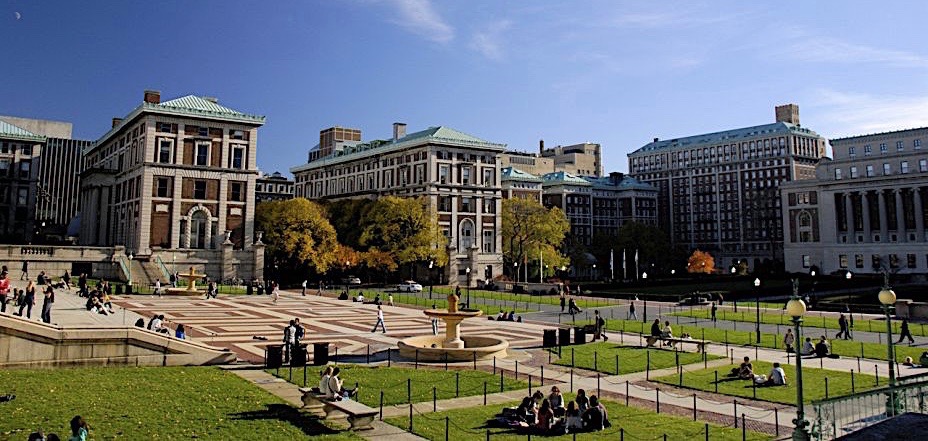
Nicola
looked at him over her shoulder, sneered and
said, “Get a new jacket that fits, Professor,”
and kept walking across College Walk and
out to Broadway, just as her father pulled up in
his Buick sedan to take her home for the last
time in the next five months.
Columbia U. College Walk
10 MYTHS OF WINE THAT WASTE YOUR TIME
AND MAY BE COSTING YOU MONEY
By John Mariani
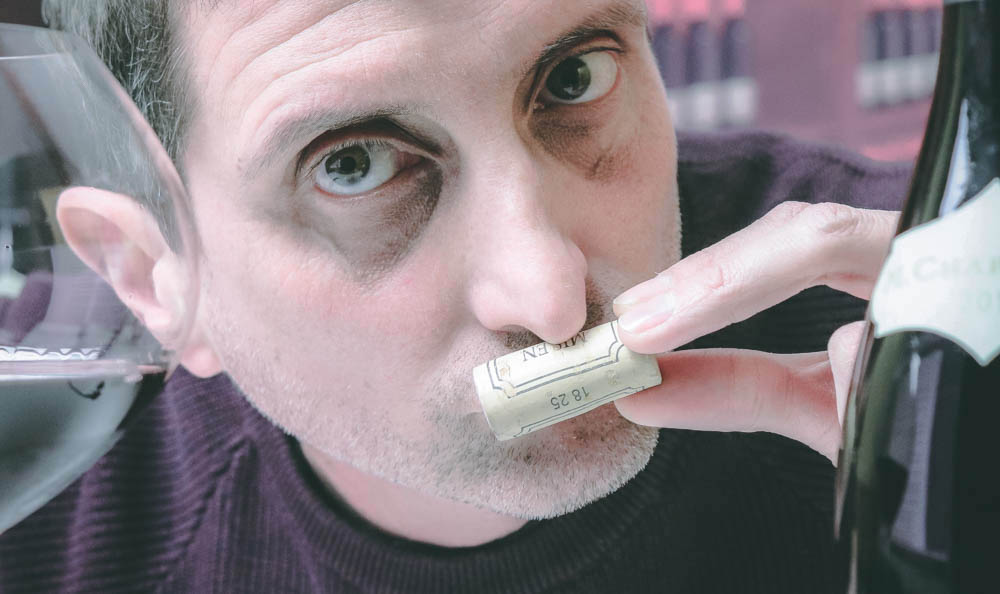
For something that is basically
just a beverage—albeit far more delicious than
most—an awful lot of folderol has grown up
around the buying, service and consuming of
wine. Indeed,
wine drinking is fraught with opportunities to
show oneself either a naďf or a show-off,
usually both at the same moment. Too often it
will cost you money. Here are ten wine myths
that will save you embarrassment and even some
cash.
1. Wine is a
living thing.
On the contrary, once its yeasts have died
off after fermentation, it is a dead and decaying
thing. If there’s anything still living in a wine
bottle after fermentation ends—unwanted bacteria
mostly—it’s likely going to cause problems.
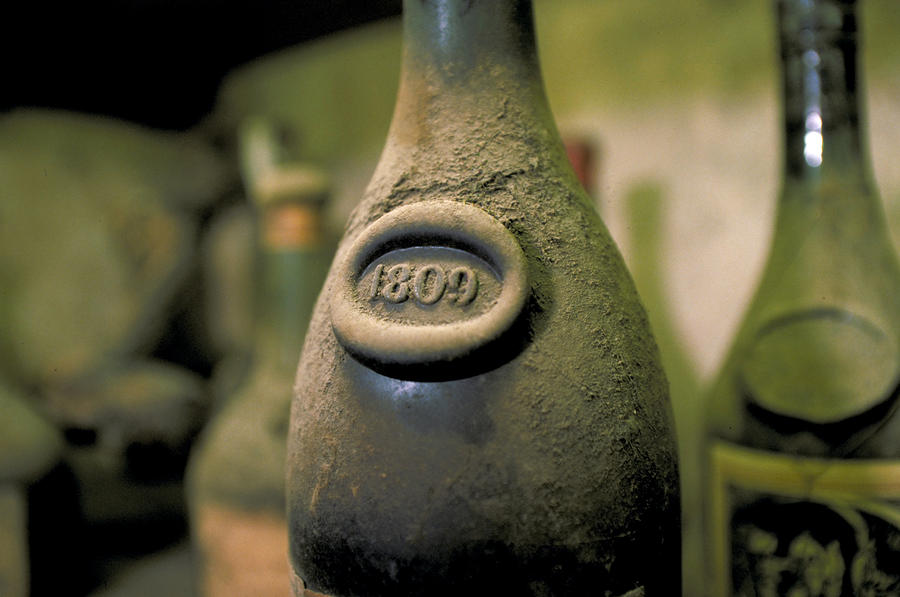
2. Red wines
get better with age. If the age in question
is the time the wine spent fermenting and aging in
stainless steel or oak barrels before release,
this adage makes sense. But, unless it is a wine
of considerable complexity and strong tannins,
it’s not going to get much better once it’s on the
wine store shelves. Further aging of Grand Cru
Burgundies and Bordeaux are requisite to allow
them fully to mature, as are highly tannic
California Cabernets, but even the experts within
those regions can give only the vague-est of
recommendations beyond, “Wait five years.”
3. You should
expect very old vintages to have a somewhat
musty smell and leathery flavor. While a
connoisseur may declare a bottle of 1929 Mouton
“sound”—which is like saying a classic car is
“drivable”— the chances are that the bottle is way
beyond its prime. And while a recommended “swirl
of the glass” may blow off a little of the smell
and bring some oxygen into the wine, it is more
likely that “barnyard smell” (also described as
“cat’s pee”) indicates that the wine has simply
deteriorated through oxidation (also called
maderization) that once begun is unstoppable.
Having once actually tasted a 1929 Mouton, I was
amazed that it was drinkable at all, but within
ten minutes’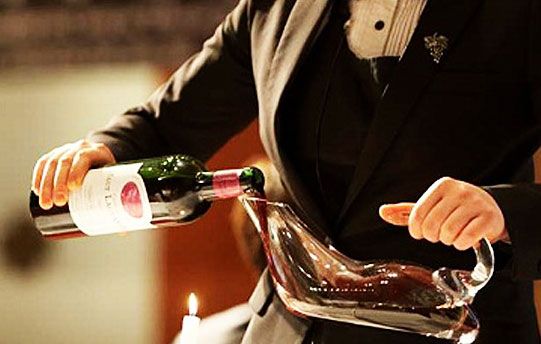 exposure
to the air it became undrinkable.
exposure
to the air it became undrinkable.
4. Red wines should always be decanted
to remove sediment. If a red wine has
sediment, fine. If not, there’s no reason to
decant. Most
red wines upon release do not throw off sediment
anyway; those aged five years or more may. Some
enophiles contend that decanting brings oxygen
into the wine, which is as easily accomplished by
just pouring the wine into a glass.
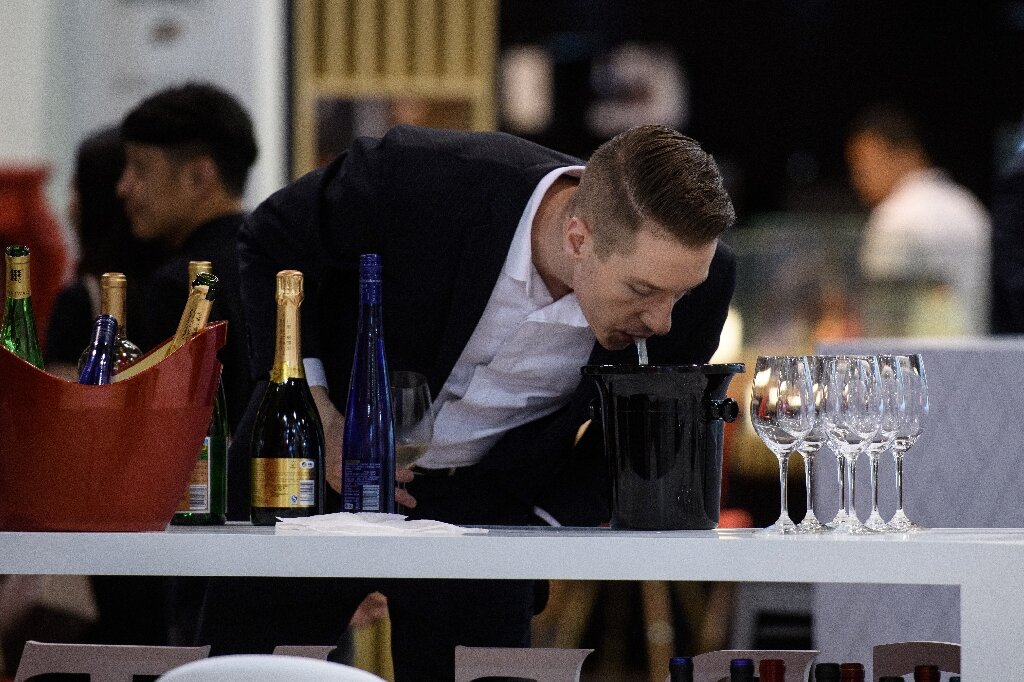
5. When tasting a wine, you should suck
in air and swirl the wine several times in your
mouth to bring out the wine’s qualities or
defects. . . then spit!. If you’re a professional wine
taster—who may go through 50 wines at a time and
spits the wines out—this can be helpful. But at a
dinner table? Uh-uh. You’ll look ridiculous and
embarrass your friends. Just take a sip and make a
determination.
6. One should
always sniff the cork. Why? Ninety times out
of a hundred it will reveal nothing, unless the
cork is so visibly rotted that you wouldn’t want to
sniff it. The purpose of presenting the cork is a
holdover from days when an inferior wine was
deliberately and unscrupulously mis-labeled as a
better one—a scam exposed by simply looking
at the cork to see if it was imprinted with the
original, real provenance of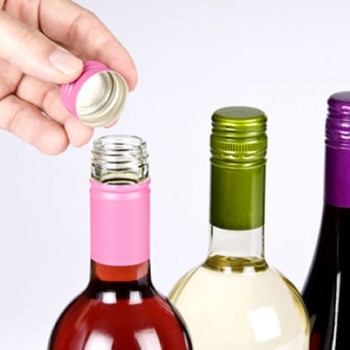 the wine.
the wine.
7. A screwtop closure indicates an
inferior wine. The debate over how often corks cause
a wine to taste “corked”—a smell and taste caused
by a chemical called TCA that may as easily come
from a wine cask or even moldy cardboard boxes in
a winery—continues year after year. Arguments in
favor of using a cork stopper run from cork’s
allowing a small amount of oxygen to enter and
inspirit the wine, which is not a proven virtue,
to silly notions that popping a cork is ineffably
romantic. But the secret is, just about every
winemaker I’ve ever spoken to, in the U.S., Europe
and the rest of the world, would prefer to switch
to a screwtop or glass closure rather than risk a
five to ten percent failure that corks may cause.
Most wines from New Zealand and Australia already
are, as are many from Germany.
8. Expensive
wines are often allocated because of their
scarcity. This is of course true if you are
speaking of Grand Cru Burgundies, Bordeaux and
some Northern Italian wines that are by law
delimited to be made only within a certain acreage
and the number of bottles that go to market. In a
vintage with a small crop, such wines will be very
scarce; in a large crop the estate may only
produce the maximum amount of cases allowed, with
the rest sold under second labels. (There is, as
you’d imagine, a grey market for rare wines whose
provenance is often in doubt.)
 No such legal
restrictions are made for California wines, so
that a huge crop—often the case in sunny
California—for a so-called “trophy wine” estate
with high numerical ratings in the wine media
makes an oversupply of wine a liability. As a
result, they may sell off their 98-point wine to a
middleman for sale under a different label at
greatly reduced prices. In those years with a
small crop, such prestigious wines are often
allocated to subscribers, wine shops and
restaurants—perhaps a single case or even one or
two bottles—thereby keeping the wines’ prices
artificially high. The key, then, is to find out
what kind of supply there was in a particular
vintage. In a year with a bumper crop, allocations
should be very suspect.
No such legal
restrictions are made for California wines, so
that a huge crop—often the case in sunny
California—for a so-called “trophy wine” estate
with high numerical ratings in the wine media
makes an oversupply of wine a liability. As a
result, they may sell off their 98-point wine to a
middleman for sale under a different label at
greatly reduced prices. In those years with a
small crop, such prestigious wines are often
allocated to subscribers, wine shops and
restaurants—perhaps a single case or even one or
two bottles—thereby keeping the wines’ prices
artificially high. The key, then, is to find out
what kind of supply there was in a particular
vintage. In a year with a bumper crop, allocations
should be very suspect.
Cameron
Hughes (left),
CEO of the giant wine distributor under his
name, told me that after several very bountiful
vintages from 2012 to 2019, “The state is
drowning in wine. For wineries that pride
themselves on small production and selling only
by allocation, it’s a little embarrassing to
find their warehouses bulging with thousands of
gallons of wine. Still, they don’t want to see
their wines selling in Costco because of the
perception of “lower quality.”
9. Alcohol
levels are wholly a result of climate and
terroir. For millennia this was certainly
the case, and even today a process called
chaptalization is used in certain regions of
France by which hearty, high alcohol wines from
southern Europe and northern Africa are added  to boost the alcohol levels. Other
wines like Port and Marsala are fortified by
adding brandy. But in Europe the tradition has
been to let nature determine the percentage of
alcohol in a wine; indeed, the legal definition of
a table wine stops at 14%. Despite this, many
wineries, especially in California, South America,
Australia and New Zealand, bottle wines well above
that, at 14.5%, 15% or higher, without
fortification. Many insist is it simply a matter
of having more sun, more heat and more climate
change, which causes the sugar levels to rise and
in turn the sugar ferments into more alcohol.
to boost the alcohol levels. Other
wines like Port and Marsala are fortified by
adding brandy. But in Europe the tradition has
been to let nature determine the percentage of
alcohol in a wine; indeed, the legal definition of
a table wine stops at 14%. Despite this, many
wineries, especially in California, South America,
Australia and New Zealand, bottle wines well above
that, at 14.5%, 15% or higher, without
fortification. Many insist is it simply a matter
of having more sun, more heat and more climate
change, which causes the sugar levels to rise and
in turn the sugar ferments into more alcohol.
But many modern wineries trying
to win media awards for big, brawny bottlings try
to increase alcohol in the vineyard and labs by
techniques such as keeping grapes on the vines to
become over ripe in order to increase the sugars.
According to the Oxford Companion to Wine, “The
resulting wines tend to be high in alcohol without
necessarily being accompanied by ripe fruit aromas
and phenolics [which are chemical compounds that
add pigment, acid and flavors].”
10. You should
always send back a wine you don’t like. No,
you should only send back a wine that has gone
bad, either by being oxidized or corked. Just
because you don’t care for the taste of the wine
is no reason to ask for it to be taken off your
bill. The exception is when a wine steward has
really pushed a wine on you that you’re unfamiliar
with and you find the wine distasteful. Then,
back it goes.
Sponsored by

Any of John Mariani's books below may be ordered from amazon.com.
 The Hound in Heaven
(21st Century Lion Books) is a novella, and
for anyone who loves dogs, Christmas, romance,
inspiration, even the supernatural, I hope you'll find
this to be a treasured favorite. The story
concerns how, after a New England teacher, his wife and
their two daughters adopt a stray puppy found in their
barn in northern Maine, their lives seem full of promise.
But when tragedy strikes, their wonderful dog Lazarus and
the spirit of Christmas are the only things that may bring
his master back from the edge of despair.
The Hound in Heaven
(21st Century Lion Books) is a novella, and
for anyone who loves dogs, Christmas, romance,
inspiration, even the supernatural, I hope you'll find
this to be a treasured favorite. The story
concerns how, after a New England teacher, his wife and
their two daughters adopt a stray puppy found in their
barn in northern Maine, their lives seem full of promise.
But when tragedy strikes, their wonderful dog Lazarus and
the spirit of Christmas are the only things that may bring
his master back from the edge of despair. WATCH THE VIDEO!
“What a huge surprise turn this story took! I was completely stunned! I truly enjoyed this book and its message.” – Actress Ali MacGraw
“He had me at Page One. The amount of heart, human insight, soul searching, and deft literary strength that John Mariani pours into this airtight novella is vertigo-inducing. Perhaps ‘wow’ would be the best comment.” – James Dalessandro, author of Bohemian Heart and 1906.
“John Mariani’s Hound in Heaven starts with a well-painted portrayal of an American family, along with the requisite dog. A surprise event flips the action of the novel and captures us for a voyage leading to a hopeful and heart-warming message. A page turning, one sitting read, it’s the perfect antidote for the winter and promotion of holiday celebration.” – Ann Pearlman, author of The Christmas Cookie Club and A Gift for my Sister.
“John Mariani’s concise, achingly beautiful novella pulls a literary rabbit out of a hat – a mash-up of the cosmic and the intimate, the tragic and the heart-warming – a Christmas tale for all ages, and all faiths. Read it to your children, read it to yourself… but read it. Early and often. Highly recommended.” – Jay Bonansinga, New York Times bestselling author of Pinkerton’s War, The Sinking of The Eastland, and The Walking Dead: The Road To Woodbury.
“Amazing things happen when you open your heart to an animal. The Hound in Heaven delivers a powerful story of healing that is forged in the spiritual relationship between a man and his best friend. The book brings a message of hope that can enrich our images of family, love, and loss.” – Dr. Barbara Royal, author of The Royal Treatment.
 |
The Encyclopedia of American Food and Drink by John F. Mariani (Bloomsbury USA, $35) Modesty forbids me to praise my own new book, but let me proudly say that it is an extensive revision of the 4th edition that appeared more than a decade ago, before locavores, molecular cuisine, modernist cuisine, the Food Network and so much more, now included. Word origins have been completely updated, as have per capita consumption and production stats. Most important, for the first time since publication in the 1980s, the book includes more than 100 biographies of Americans who have changed the way we cook, eat and drink -- from Fannie Farmer and Julia Child to Robert Mondavi and Thomas Keller. "This book is amazing! It has entries for everything from `abalone' to `zwieback,' plus more than 500 recipes for classic American dishes and drinks."--Devra First, The Boston Globe. "Much needed in any kitchen library."--Bon Appetit. |
"Eating Italian will never be the same after reading John Mariani's entertaining and savory gastronomical history of the cuisine of Italy and how it won over appetites worldwide. . . . This book is such a tasteful narrative that it will literally make you hungry for Italian food and arouse your appetite for gastronomical history."--Don Oldenburg, USA Today. "Italian
restaurants--some good, some glitzy--far
outnumber their French rivals. Many of
these establishments are zestfully described
in How Italian Food Conquered the World, an
entertaining and fact-filled chronicle by
food-and-wine correspondent John F.
Mariani."--Aram Bakshian Jr., Wall Street
Journal.
"Equal parts
history, sociology, gastronomy, and just
plain fun, How Italian Food Conquered the
World tells the captivating and delicious
story of the (let's face it) everybody's
favorite cuisine with clarity, verve and
more than one surprise."--Colman Andrews,
editorial director of The Daily
Meal.com. "A fantastic and fascinating
read, covering everything from the influence
of Venice's spice trade to the impact of
Italian immigrants in America and the
evolution of alta cucina. This book will
serve as a terrific resource to anyone
interested in the real story of Italian
food."--Mary Ann Esposito, host of PBS-TV's
Ciao
Italia. "John Mariani has written the
definitive history of how Italians won their
way into our hearts, minds, and
stomachs. It's a story of pleasure over
pomp and taste over technique."--Danny Meyer,
owner of NYC restaurants Union Square
Cafe, The Modern, and Maialino.
|
 |
 |
 |
 |
 |
 |
 |
 |
 Everett Potter's Travel Report:
Everett Potter's Travel Report: 
 Eating Las Vegas
JOHN CURTAS has been covering the Las Vegas
food and restaurant scene since 1995. He is
the co-author of EATING LAS VEGAS – The 50
Essential Restaurants (as well as
the author of the Eating Las Vegas web site: www.eatinglasvegas.
He can also be seen every Friday morning as
the “resident foodie” for Wake Up With the
Wagners on KSNV TV (NBC) Channel 3 in
Las Vegas.
Eating Las Vegas
JOHN CURTAS has been covering the Las Vegas
food and restaurant scene since 1995. He is
the co-author of EATING LAS VEGAS – The 50
Essential Restaurants (as well as
the author of the Eating Las Vegas web site: www.eatinglasvegas.
He can also be seen every Friday morning as
the “resident foodie” for Wake Up With the
Wagners on KSNV TV (NBC) Channel 3 in
Las Vegas.
MARIANI'S VIRTUAL GOURMET
NEWSLETTER is published weekly. Publisher: John Mariani. Editor: Walter Bagley. Contributing Writers: Christopher Mariani,
Robert Mariani, Misha Mariani, John A. Curtas, Gerry Dawes, Geoff Kalish,
and Brian Freedman. Contributing
Photographer: Galina Dargery. Technical
Advisor: Gerry
McLoughlin.
If you wish to subscribe to this
newsletter, please click here: http://www.johnmariani.com/subscribe/index.html
© copyright John Mariani 2020

